Ethnographic Study - people with visual impairment
This is my ethnographic study with people who are visually impaired. Before begining the text, I want to confess that I am using the word ethnography in a loose sense here. While my timely visits to National Association for the Blind (NAB), Bangalore and Captain Chand Lal school (a school for children with visual impairment) in Delhi, making notes on their daily activities, conversations with their trainers, studying the tools used by them (e.g taylor frame to do mathematical calculations) can be accounted as an ethnographic study, I am in no position a trained ethnographer. I propose to write stories here - the stories that I shared with them to have an inside look into the lives of people who are either congentially blind or loose their eye-sight due to accidents.
These stories are from my two visits in different cities that itself opens a wide range of experiences as such stories are socially situated. Thanks to my friend Naren (working as a designer at SAP) who agreed to be a part in this exploration and helped me drafting a letter to the CEO of NAB in Bangalore, asking him to allow us a visit as engineers to see this world that his hidden from the “normal” world in a silent space near Indira Nagar (which on the contrary is known for crazy night life).
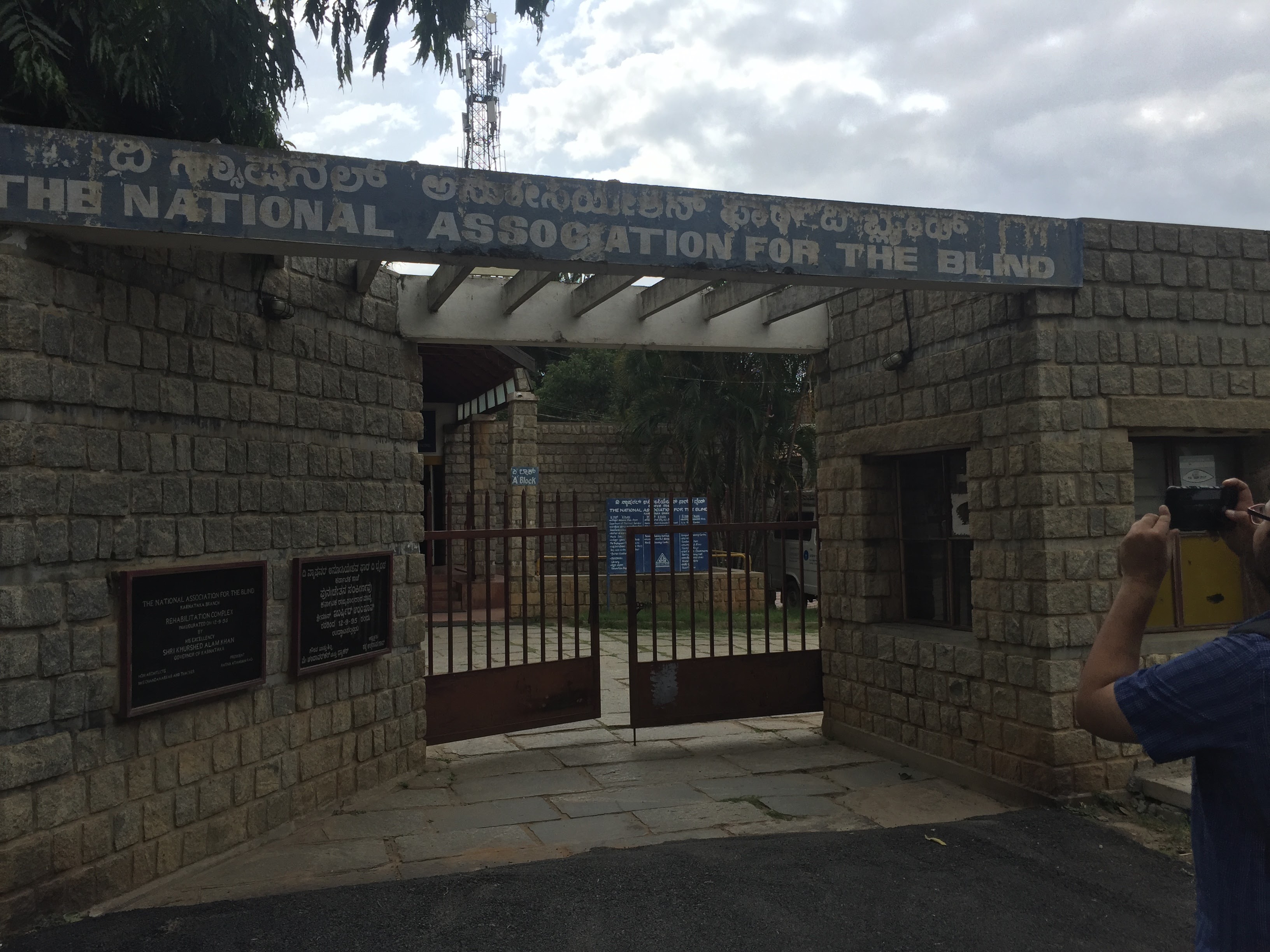
I want to first detail out my visits to NAB here. Since me and Naren were working at SAP Labs, Bangalore when we took this self initiative to visit NAB, we could only get free weekends due to our busy schedules. With NAB closed on Sundays, we were only left with Saturdays. Hence, the stories here and the activities the people at NAB do are situated not only to the space but also to the disciplinary activities assigned to them on their weekend. NAB is like a training school that helps people with visual impairment (VIP’s) in learning daily activities and struggles like washing clothes, hair cuts, eating meals, eating meals with other people, and live in a noisy city which is culturally biased on visual senses than the auditory.
National Association for Blind (Bangalore)
The morning would begin with a prayer where the VIP’s would come either alone (or in groups) to an open space and sit on the ground keeping their walking canes placed besides them. While some of the VIP’s who have spent enough time in NAB would know where to sit (in rows of four one behind the other), the newly joined would be assisted by their fellow mates and would be called by their teachers for directions. Unless required, the teacher only assisted them verbally. On our very first day - Naren and me sat in a corner in the open space looking at them while understanding most of them can’t look back at us. As curious as we were, we kept our bags aside and tried to recite the prayer (which was in Kannada) with them. Naren being a Tamilian was affluent with Tamil and I with Hindi. However, most of the VIP’s spoke Kannada, a language common in Karnataka, India. The morning prayer was not a strict prayer though as we found many people giggling with their friends just like we used to do in schools. After the prayer they would get up for their next activity which is to take their canes and go for a long walk outside NAB with multiple trainers assisting them.

The road just outside NAB was a silent one though with pot holes and cars parked in an organized way. Hence the teachers assisted the VIP’s to put their right foot front while moving the canes to the left to find if there is an object in their way. This way of walking would help them locate potholes, cars, stray animals on their way. The road then connected to the main road where one could actually listen to the city noise. The main road had buses moving at fast speeds with repeated honkings indulging in a sensorial soundscape. As far as I remember, there was no closeby traffic light to cross the road to go to the other side of the road. Hence, the trainers (or teachers) helped the VIP’s in signalling them of a clear road. They also insisted them not to loose their canes as canes are a visual cue to the buses that the person on the road is visually imapired. This is where Naren and me got our first lesson that if we are going to build assistive technolgies in future we need to remember that people with disabilities are not users of products. They don’t need products but AFFORDANCES (Gibsonian sense).
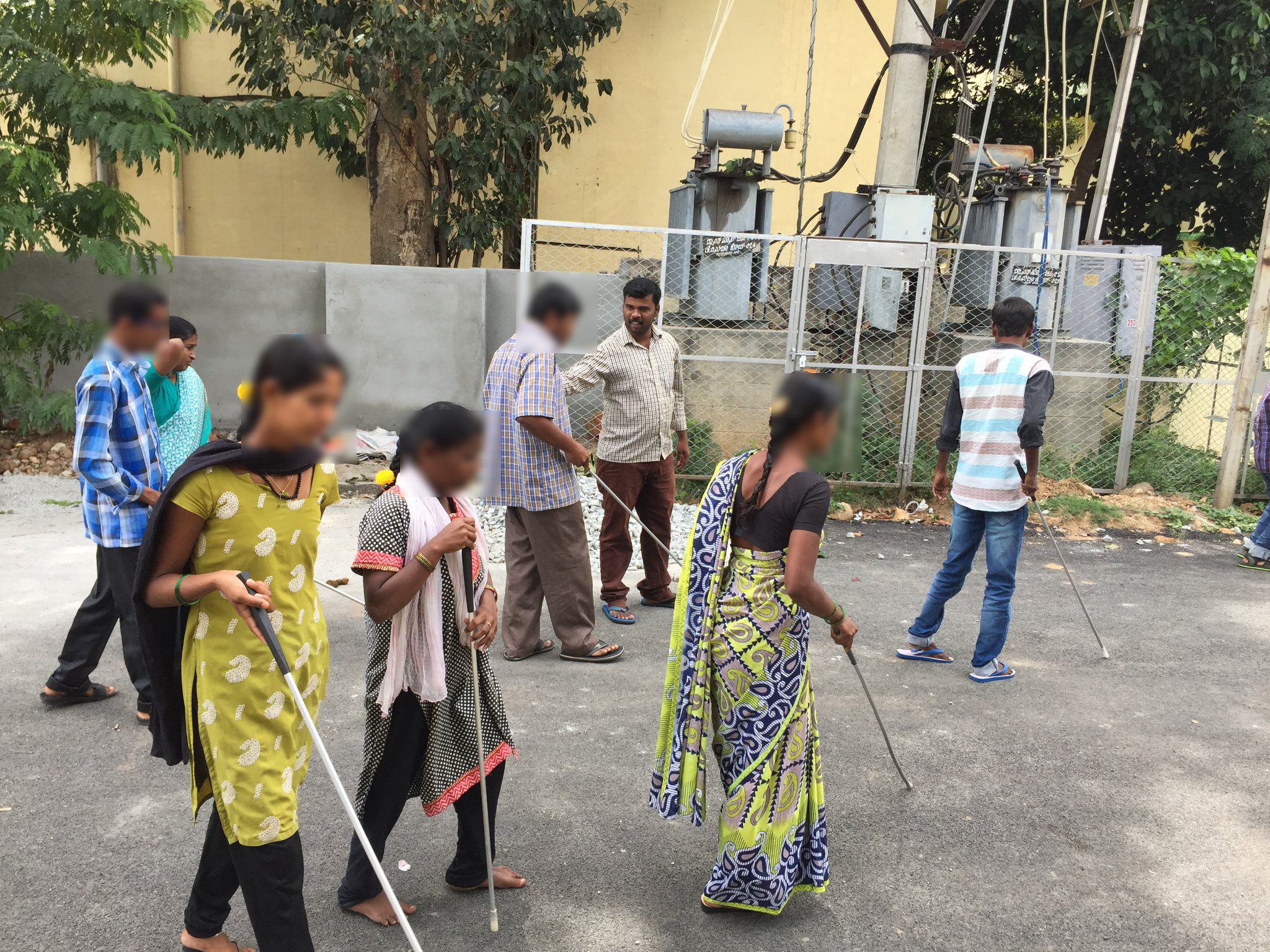
Naren is talking to a person with visual impairment since both of them are tamilian. Similarly there was someone (whom I can’t name here due to privacy issues) who was partially blind but was very happy to find someone who spoke Hindi. See the images below to see us in conversations before lunch.
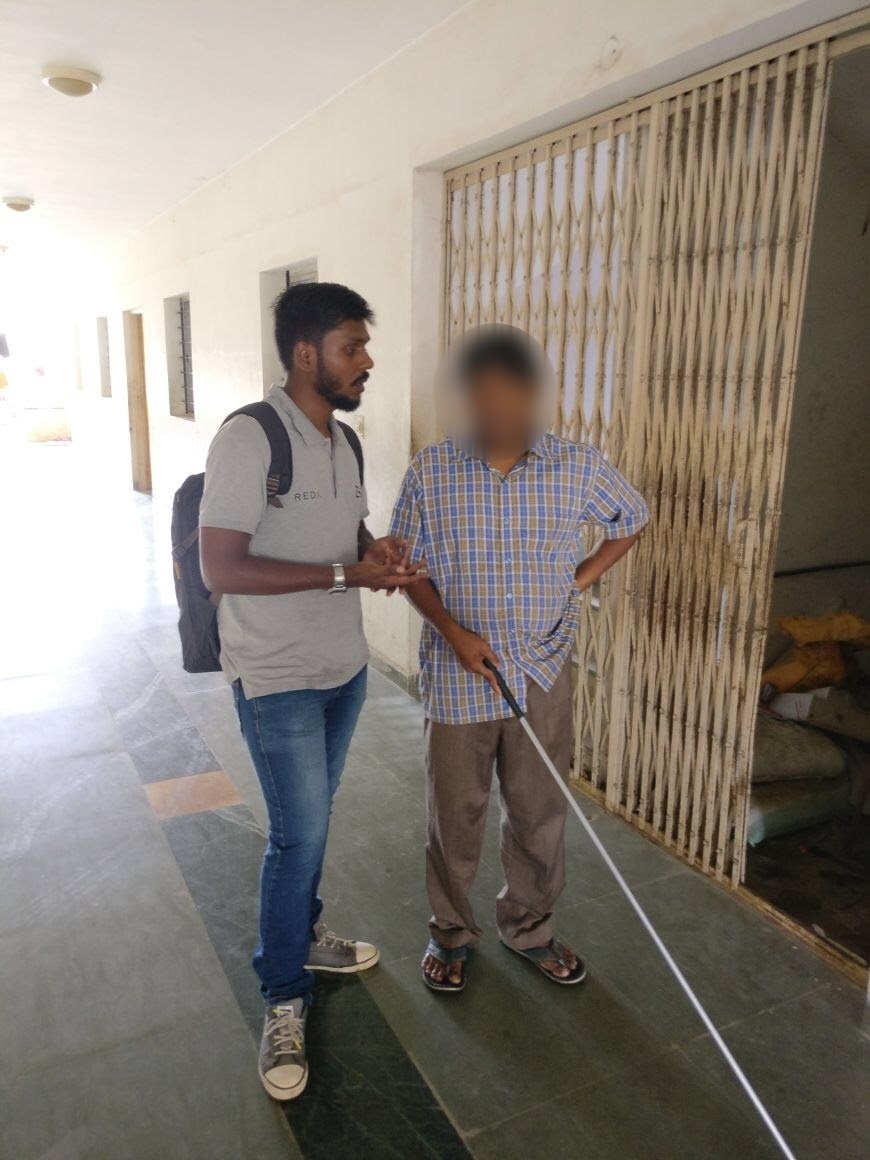

(to be continued)
Captain Chand Lal School (Delhi)
I share my learning experiences here with you of visiting a school in Gurgaon, India. Where as NAB mostly had people who were in the age group of 20-35, Captain Chand Lal Blind school (CCBL) is just like a primary school where they teach children from nursery to 8th standard. So I will divide this post with various activities they do class wise explaining through some images.
Kindergarten
These are some artificial props they are taught to hold in hands and touch in order to understand how the world is around them. Different fruits / vegetables props are available in the classroom which they hold in their hands, identtify and reply back to the teacher about it. The mangoes used here are made of plastic as props. This brings a question in the understanding of the difference between the shape and texture of the fruit.
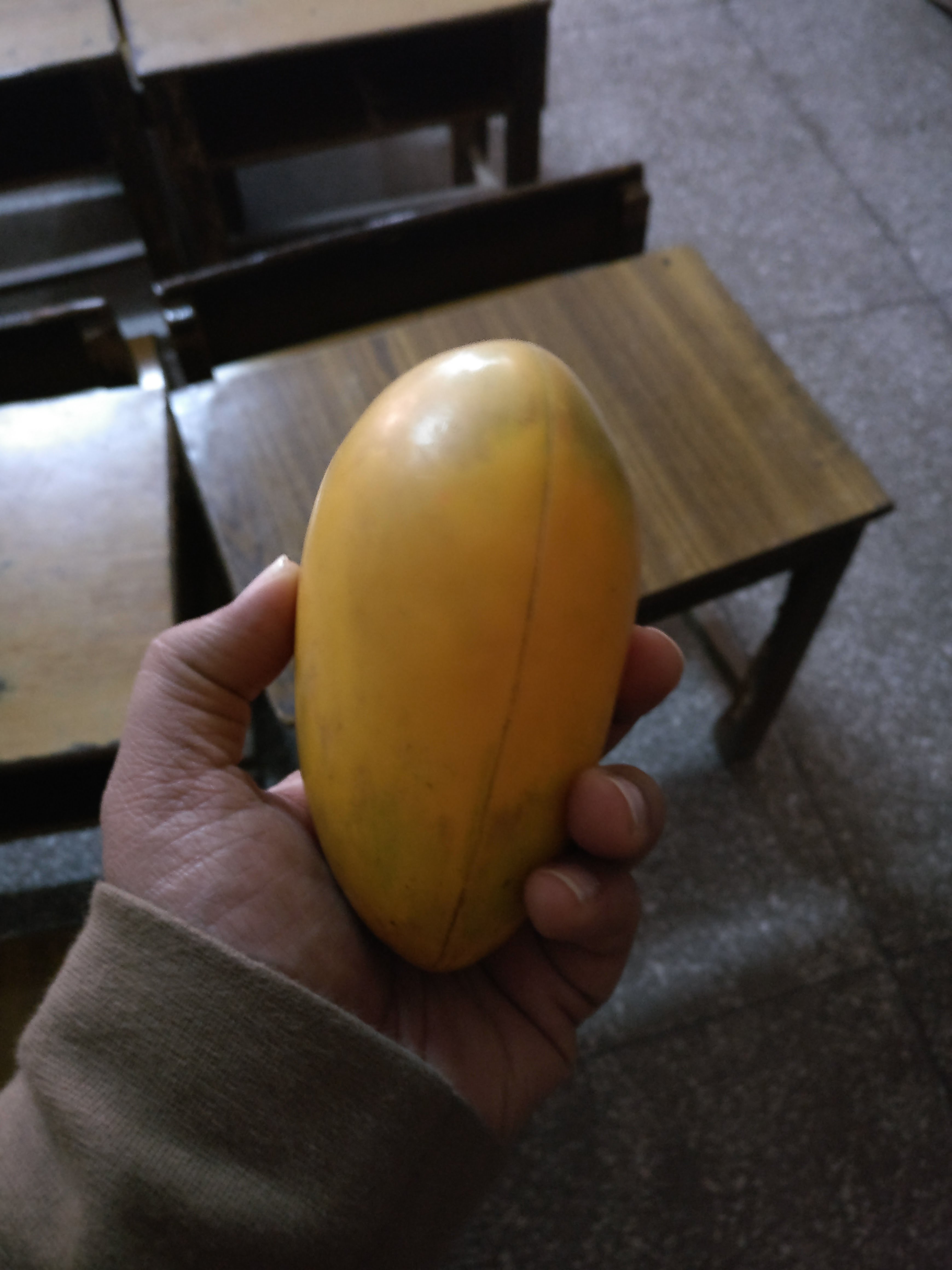
Apart from the things like mangoes and apples which they would come across in life, they are also exposed to some props of animals like elephant and giraffe to know the difference between the two animals.
It is interesting to think - are they really gonna touch an elephant or giraffe in their entire lifetime? While elephant has a trunk, giraffe has a long neck but yet both of them have four legs. Most of us are also taught the same in schools in a text book visually. However, kids here are taught through tactile simulation. Does it mean they have a different understanding of such animals than us?
Class 1-5
Moving to higher classes (once they are equipped with braille) they are taught science throgh CBSE notebooks using braille on a tactile book.
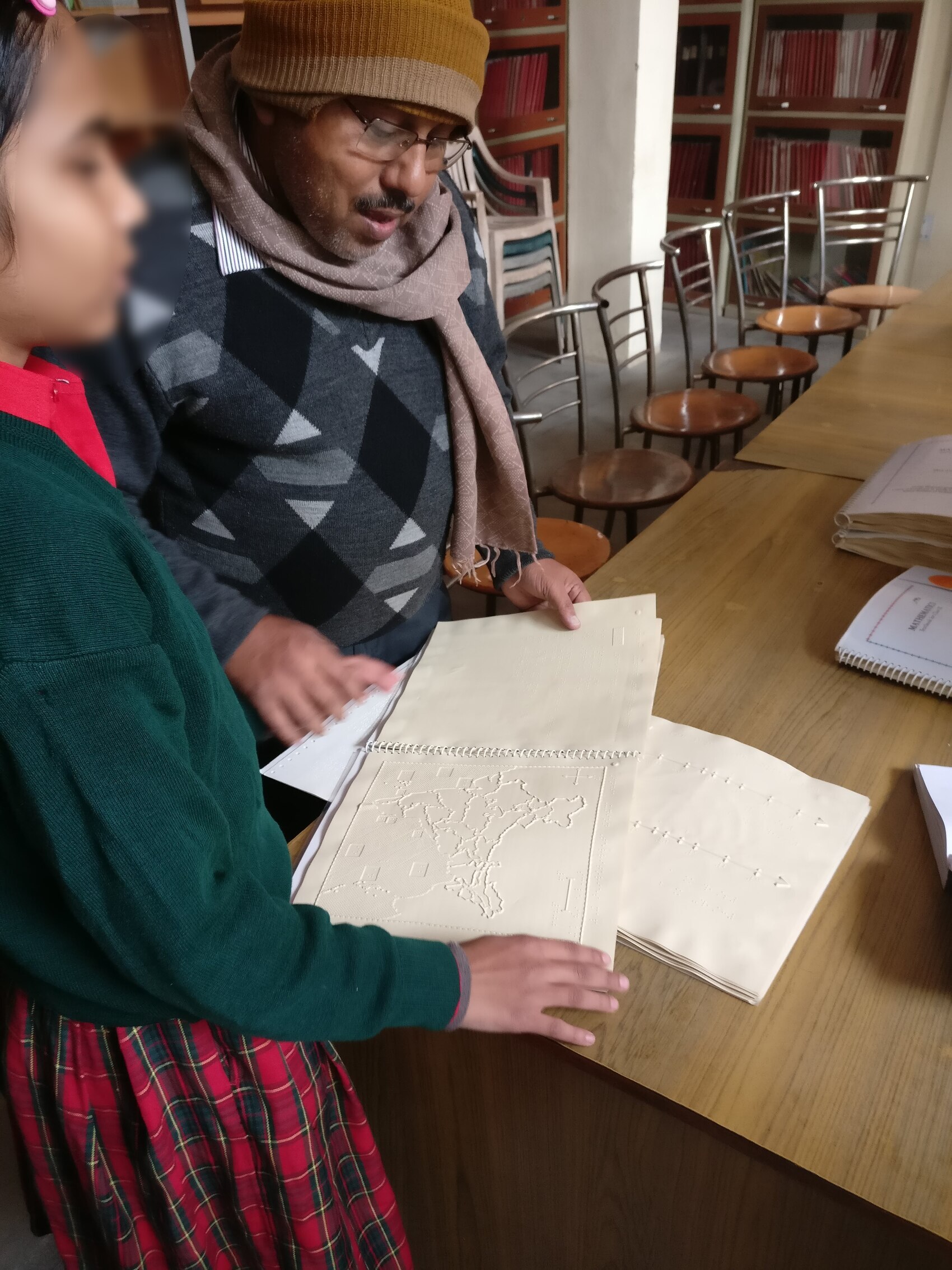

Maths book where one needs to make a line segment and also explain what they mean in the diagram, line segment is embossed on the right hand side and explanation is given on the left through braille.
The students are also taught mathematics (the basics of addition, subtraction, and multiplication) using a tactile tool called taylorframe.
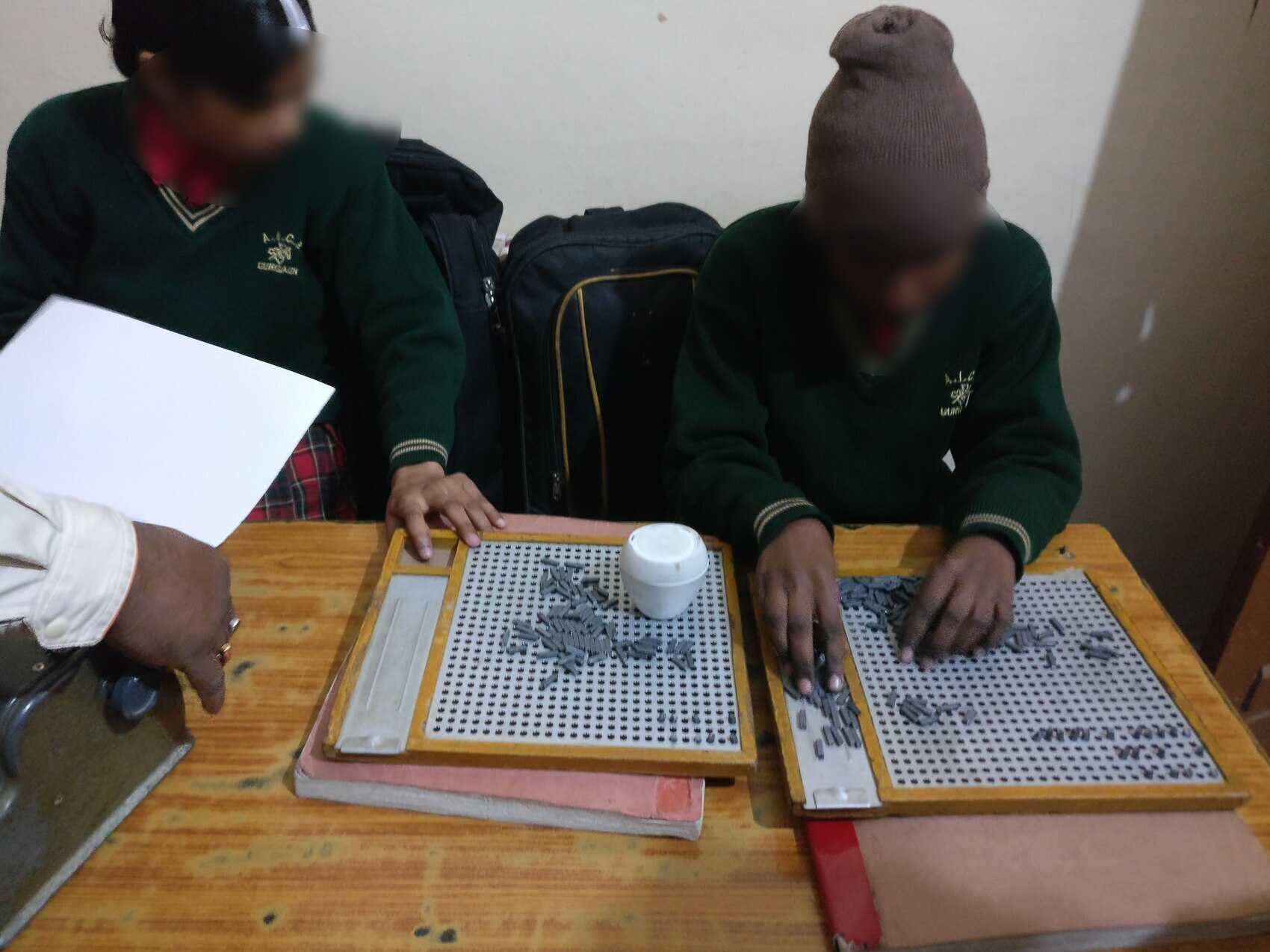
(to be continued)